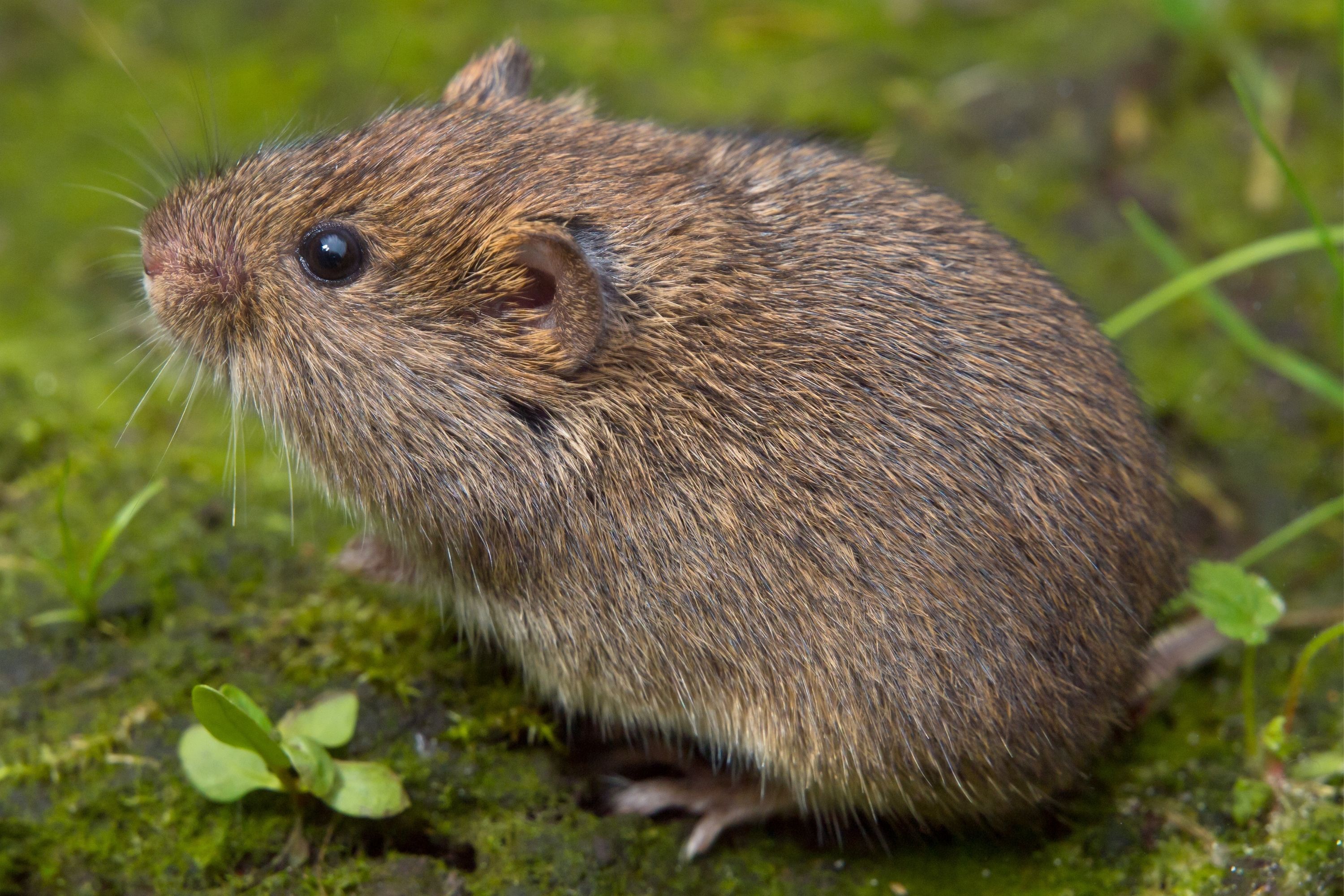Creeping vole
(Microtus oregoni)

Description
The creeping vole (Microtus oregoni), sometimes known as the Oregon meadow mouse, is a small rodent in the family Cricetidae. Ranging across the Pacific Northwest of North America, it is found in forests, grasslands, woodlands, and chaparral environments. The small-tailed, furry, brownish-gray mammal was first described in the scientific literature in 1839, from a specimen collected near the mouth of the Columbia River. The smallest vole in its range, it weighs around 19 g (0.67 oz). At birth, they weigh 1.6 g (0.056 oz), are naked, pink, unable to open their eyes, and the ear flaps completely cover the ear openings. Although not always common throughout their range, there are no major concerns for their survival as a species. On average, creeping voles weigh around 19 g (0.67 oz) with a reported range of 14.5 to 27.5 g (0.51 to 0.97 oz) The average length is around 140 mm (5.5 in), with a range of around 129 to 154 mm (5.1 to 6.1 in) Compared to other voles within their geographic range, they are the smallest. They have smaller eye opening (around 2 mm (0.079 in) in diameter) compared to other voles that share the same geographic range (sympatric) or have adjacent ranges (parapatric). There are other distinguishing features of the roots and enamel of the molar teeth that help in differentiation. Unlike other voles in the range, only the creeping vole and the (much larger) water vole have five plantar tubercles on the hindfeet. They are Pentadactyl, although the pollex is reduced in size and lack a claw. They walk with their feet planted firmly on the ground (plantigrade locomotion). The foot pads have a moderate amount of fur. The fur markings are plumbeous to a dark brown or black. There are sometimes yellowish hair markings as well. The underside fur markings tend to be lighter beige to whitish. The tail may be gray to black and often lighter below. Creeping voles have a relatively short tail, measuring less than 30% their total body length. They have short ears, which are nearly hairless, though a few black hairs present. They protrude just slightly from the fur around the head. They have eight mammae, with two pairs present in each of the pectoral and inguinal regions. The skull of the creeping vole has a low, flat profile, with a long and slender snout. The zygomatic arches are somewhat delicate. The incisive foramen is short and wide, but not so much as to be a distinguishing feature. They have small molars.
Taxonomic tree:







